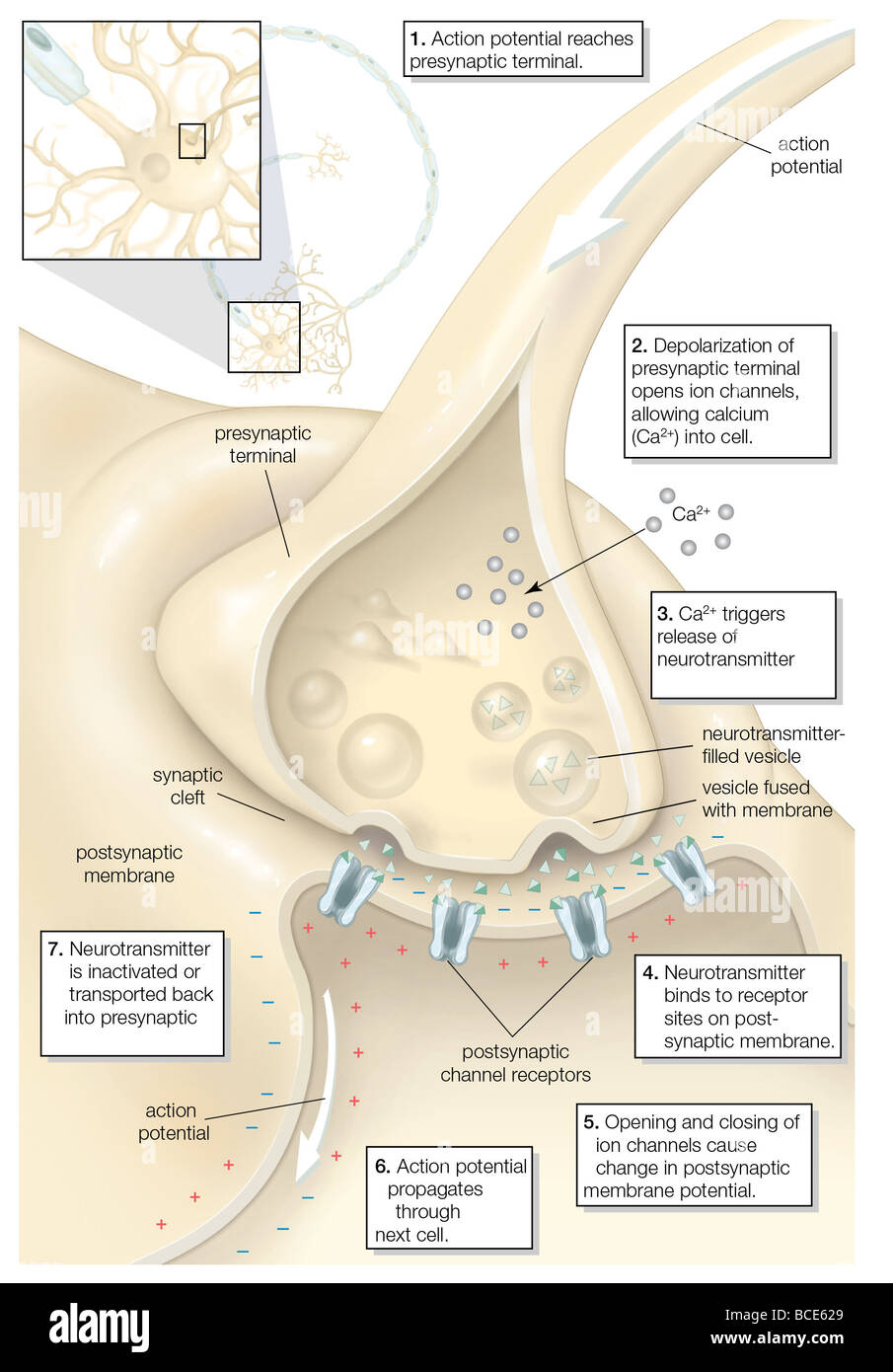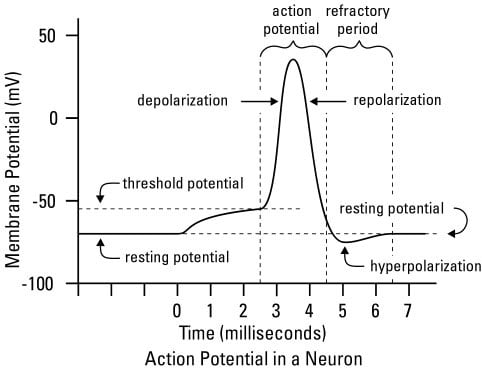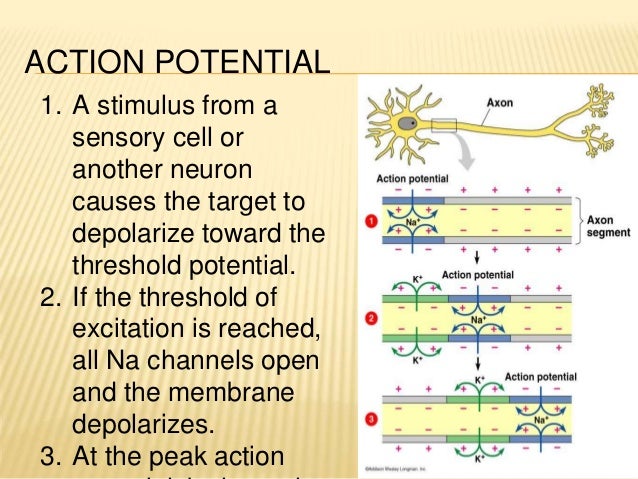Impulses Nerve impulses have a domino effect. Each neuron receives an impulse and must pass it on to the next neuron and make sure the correct impulse continues on its path. Through a chain of chemical events, the dendrites (part of a neuron) pick up an impulse that's shuttled through the axon and transmitted to the next neuron. Transmission of a signal within a neuron (in one direction only, from dendrite to axon terminal) is carried out by the opening and closing of voltage-gated ion channels, which cause a brief reversal of the resting membrane potential to create an action potential. Regardless of the strength of the stimulus a nerve impulse is transmitted at full strength or not at all-if stimulus exceeds the threshold potential muscle fibre will give a complete response (otherwise no response)-action potential remains the same/nerve impulse is not more intense or weaker. In medullated nerve fibres (white fibres), the impulse jumps from node to node, it is called saltatory propagation (Fig. It increases the speed of nerve impulse which is about 20 times faster in medulated than in non-medullated nerve fibres. The speed of transmission of nerve impulse also depends upon the diameter of the fibre. Nerve Impulse Transmission Within a Neuron To do 9 min read 4 min video All functions performed by the nervous system—from a simple motor reflex to more advanced functions like making a memory or a decision—require neurons to communicate with one another.
How Are Nerve Impulses Transmitted Across The Synapse

Synapse: the junction between the axon terminal of one neuron and dendrites, cell body or axon of another neuron is called synapse. The neuromuscular junction is also known as synapse.
Synaptic knob: the swelling terminal of axon or dendrites is known as synaptic knob.

Pre-synaptic neuron: the neuron carrying impulse toward synapse
Post synaptic neuron: the neuron which receive the impulse and carry the impulse away from the synapse.
Two theories have been put forward to explain the conduction of nerve impulse across the synapse. They are;
- Electrical transmission theory
- Chemical transmission theory

Electrical transmission theory:
Impulse transmission through synapse is accomplished by electric current. When the impulse reaches the pre synaptic knob, the impulse itself act as stimulus for the post synaptic neuron causing depolarization. Now the action potential generate in second neuron.
Chemical transmission theory:
Nerve impulse are conducted across the synapse with the help of chemical substances called neurotransmitter. The process of chemical transmission was discovered by Henry (1936).

Mechanism
Figure: Nerve impulse transmission through Synapse
- When nerve impulse reaches the pre-synaptic knob, it depolarized the presynaptic membrane and causes the opening of voltage gated calcium channel.
- Diffusion of Ca++ ion in the presynaptic knob causes movement of synaptic vesicle to the surface of the knob. Synaptic vesicle carries the neurotransmitter.
- Synaptic vesicles then fused with the presynaptic membrane and get rupture to discharge its content ie. Neurotransmitter (Acetlcholine) into synaptic cleft.
- Synaptic vesicles then return to the cytoplasm of pre-synaptic knob for refilling.
- Some of the released neurotransmitter binds with the protein receptor present on the post synaptic membrane of another neuron and change the membrane potential.
- Other unbound neurotransmitter immediately get lost from the synaptic cleft.
- The depolarization of the post synaptic membrane opens the Sodium channel causing influx of Na+ ion. Thus causing depolarization and generate action potential. In this way, the impulse get transmitted to next neuron along the synapse.
How Are Nerve Impulses Transmitted Across A Synapse

The human nervous system is the body’s regulation and communication centre. It can be divided into two parts: the central nervous system which comprises the encephalon (brain, diencephalon, cerebellum and brain stem) and the spinal cord, and the peripheral nervous system formed by the nerves attached to the central nervous system.
The nervous system receives information about changes in the body and then decides to act on this information if necessary. One part of the nervous system is called voluntary, as it concerns nervous impulses transmitted to the muscles which we can control consciously. The other part is named involuntary as it concerns the nervous impulses on which we have no influence, like the heartbeat or digestion for example. Nervous impulses thus ensure message transmission within the body.
How Are Nerve Impulses Transmitted Within A Neuron
The nervous impulse is also called ‘action potential’. It refers to the electric signal produced by a neuron when stimulated. This signal is then transmitted by synapses, or connections between the cells. There are two types of nervous impulses. The first pass from the skin’s receptors or from internal organs to the brain and relay information from the brain to the muscles and glands. The others transmit information between two types of neurons.
While an electric current circulates at a speed of around 300 000 km per second, nervous impulses in the human body are much slower: 100 m per second. This speed is still more than enough to transmit information extremely quickly through the body.
Livre
How Are Nerve Impulses Transmitted Along Axons
MARIEB, Elaine N., 2005. Anatomie et physiologie humaines. Adaptation de la 6ème édition américaine (René Lachaîne). Pearson Education France.
